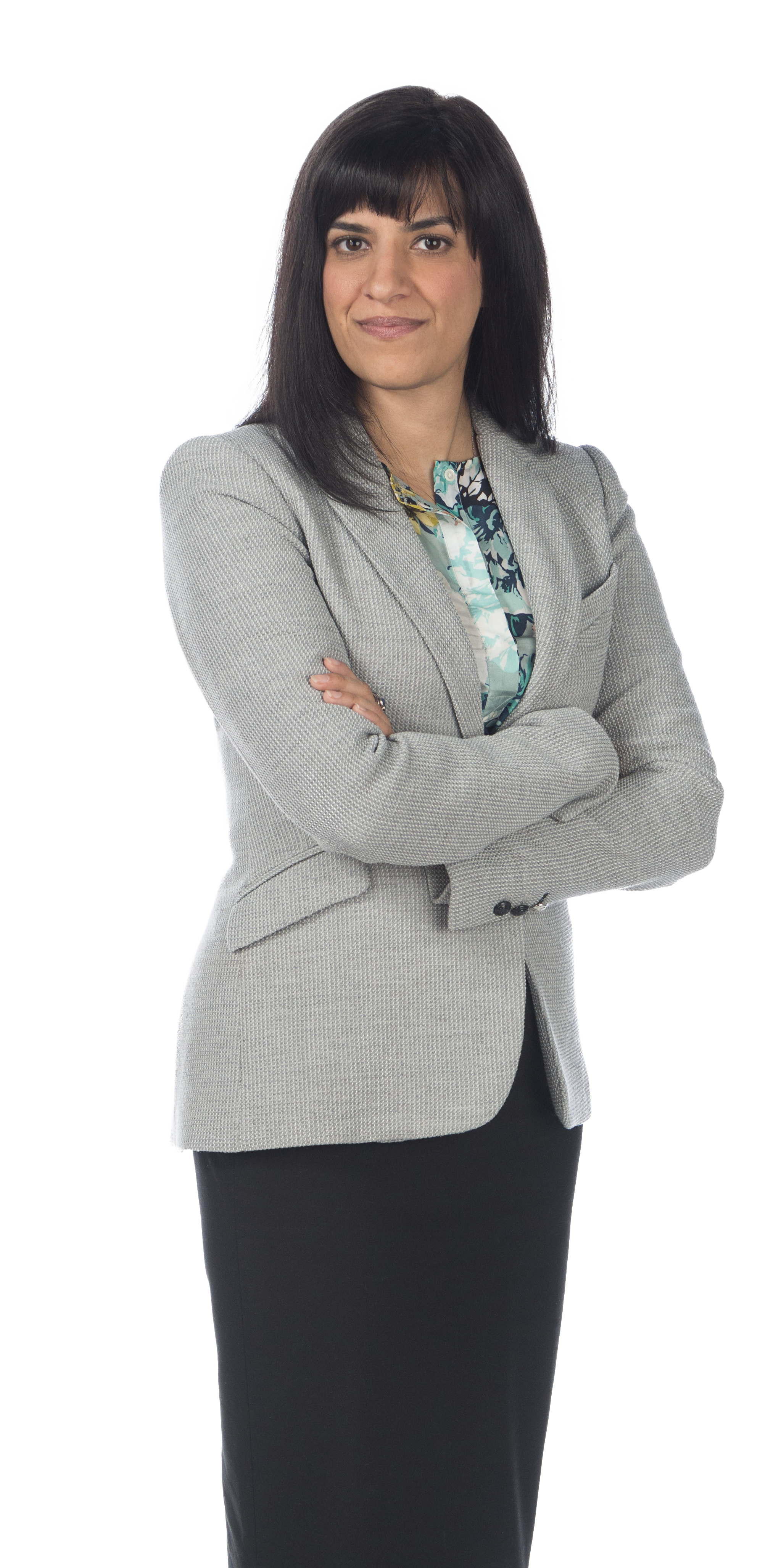
Sundeep Sandhu is a partner at Blaney McMurtry, a trusted law firm in corporate law. She is also Lexpert Magazines ‘Rising Star’, and the Recipient of the McTague Law Firm LLP Award for excellence in Business Law.
As a problem solver and trusted advisor, how do you keep your client’s best interests at the forefront during a corporate transaction?
The two key factors that assist me with keeping my client’s best interest at the forefront are: One, effective and consistent communication with my client, and secondly taking the time to understand my client’s business. Most commercial transactions have a common set of accepted terms and conditions. However, those terms and conditions may not work for a client because of the client’s risk tolerance or the nature of the client’s business. To identify these issues and tailor the transaction to meet a client’s needs, it is important for me to engage my client in a discussion about risk and to take the time to understand his/her business. As a transactional lawyer, I will then take that information and try to find alternatives or solutions that meet their preferred outcome.
Can you give us a couple of real-time case studies?
Since most of my clients are private companies, information related to transactions are not public and particulars remain confidential. However, by way of example, many foreign clients typically do not appreciate the differences between their local law and Canadian law, particularly in the employment and tax practice areas. These differences can often lead to significant liability if not addressed correctly. I often have to engage these clients in a discussion to outline liability concerns and strategize about the best way to deal with their issues.
Clients appreciate your ability to ‘demystify the process’ and keep lines of communication open, making them aware of any twists or turns in a deal so that they can assess their risks accordingly. Would you care to clarify this process?
Some clients are not accustomed to working with lawyers on a regular basis and they can find the legal process complex and confusing. Part of my role is to “demystify” it for them. For example, when buying or selling a business, it is not unusual for a client to be presented with a purchase agreement that looks like the first volume of an encyclopedia. A client can often be taken aback by the depth, formality and structure of the agreement which often just reflects typical commercial terms. I will take the time to walk them through that agreement so they understand it, the areas of risk associated with the deal and, of course, to ensure it reflects the actual business deal and meets the client’s objectives.
You advise a wide range of public and private clients, from small entrepreneurial companies to large institutions across various industries, including: aerospace, software, advertising, manufacturing, and consulting. It also looks like these industries are more or less male dominated, so how opinionated can you possibly be, and how would your clients reciprocate?
To be effective legal counsel, I have to be able to properly advise a client and strategize with them. They retain me to be present and to provide a perspective on issues they may not understand, to clarify associated risk where they may underestimate the impact of an issue and to help guide them through the process and set expectations. Ultimately, they have confidence in my legal ability and the advice I provide. At the end of the day, my clients appreciate that I counsel them effectively and provide the information and support they need to make informed decisions.
That being said, it is not unusual for me to be the only female involved in a transaction. When I started my career, this use to surprise me and it begged me to ask the question (to myself) if I would be judged/treated differently because of my gender. I quickly stopped asking that question though and credit that to the senior lawyers in Blaney McMurtry’s Corporate and Commercial department who trained me and for the record they all happen to be men. Those lawyers never treated my gender as some sort of obstacle to my ability to work on a file or with a client. Their focus (and in return my focus) has always been on my abilities and skills and how to leverage those abilities and skills and improve upon them.
Let’s talk about you giving your time, energy and insight to issues that you are passionate about, including mentoring new lawyers and addressing diversity issues that face the legal industry
I think mentorship at any phase of one’s career is essential to one’s professional development. I grew up as a first generation Canadian and other than a handful of family members who obtained higher education, there were very few resources to help guide me on my path. When I started my career, it was essential for me to seek out mentors, which is why I gravitated so quickly to the South Asian Bar Association. As I progressed in my career, I found my mentors to be invaluable resources. It became quickly evident to me that I could act as a mentor as well and “pay forward” the insight, support and encouragement that was given to me. I am very passionate about being a mentor and have never turned down an associate who has asked to touch base. If there is something I could tell young lawyers/professionals it would be to seek out mentors and be one to someone who is at an earlier stage of their career.
As a female South Asian professional, I have a unique perspective to offer on diversity and inclusion issues in the workplace. In any workplace there is a certain amount of pressure to confirm or to “fit” in. In some instances, it is harmless. At other times though, people can feel forced to “choose” to conform at the expense of their personal values. And, if someone, for whatever reason, is not able to conform, it may ultimately prevent them from progressing in their career. Part of advocating for diversity and inclusion is about identifying these instances and addressing them so opportunities are created and talent is properly recognized, utilized and developed.
In the legal profession diversity and inclusion issues also have a broader impact on access to justice. Justice must be seen to be done and that means the lawyers who represent us and those who make up our judicial system should, to some degree, reflect the communities they serve to represent. As a result, as lawyers we have an obligation to the profession and to the community at large to promote diversity and inclusion.
What drew you to choosing this profession, and what advise would you give women in university who are pursuing this career?
I obtained a specialized honors degree from York University in Public Policy and Administration. I knew at that time that I would pursue public policy work further and hoped to do so through the lens of a lawyer. It was while I was articling at Blaney McMurtry and working with the people who are now my colleagues that I realized that I enjoyed corporate law. I ultimately learned that when you do transactional work you get a unique insight about your clients and the industry they are in and you ultimately get to have a positive impact on their life and the success of their business. It is very rewarding to know you can assist someone with their personal/business growth and help them get to the next level in their business or career.
My advice to women in University now is to work diligently towards your goals and do not lose sight of yourself through that process. Also, be prepared to adjust and pivot as required – have a backup plan if things don’t go the way you expected, and also be prepared to adjust your goal if you discover a new area of interest.
You are leading the way for change within the legal industry by promoting inclusiveness and diversity initiatives as Blarneys’ ‘Firm Representative’ in the Law Firms for Diversity & Inclusion Network program. What exactly does this mean?
The Law Firm Diversity and Inclusion Network (LFDIN) is comprised of a group of Canadian law firms committed to working together to promote diversity and inclusion in the legal profession. This includes sharing ideas in connection with recruitment, retention and advancement within law firms, working with Legal Leaders for Diversity and other general counsel to advance their initiatives, supporting outreach programs and promoting constructive dialogue on issues of diversity and inclusion.
As Blaney McMurtry’s representative, I attend LFDIN meetings and events and share constructive ideas with firm management to help further diversity and inclusion initiatives at the firm. In addition, I recently co-founded Blaney McMurtry’s Diversity and Inclusion Committee. The Committee’s mandate is to enhance and celebrate diversity and inclusion and to advance Blaney McMurtry as an accepting and inclusive workplace which fosters equitable treatment, understanding and constructive communication for all members of the firm.
Tell us about your active role in the South Asian Bar Association (SABA), North America, in which you are currently serving as a member of the Executive team
I joined the South Asian Bar Association (SABA) of Toronto as a member when I articled in 2007 and then the Board of Directors shortly thereafter for a period of 4 years and acted as Vice President for a 2 year term during that time. I currently sit on the Executive Committee of SABA North American which is comprised of SABA Toronto and 25 other Chapters across the continent. I am also a member of its Advocacy Committee.
At SABA North America, I get to participate in decision making that affects the professional growth and advancement of our members, the promotion of the South Asian bar and the legal needs/issues affecting the South Asian community. My work in the association has been rewarding in that I get to act as an advocate for South Asians in the profession and community at large and I get to do this with a great group of individuals who comprise the Executive Committee and the Board of Directors.


 South Asian News E-Paper
South Asian News E-Paper Punjabi News E-Paper
Punjabi News E-Paper

















